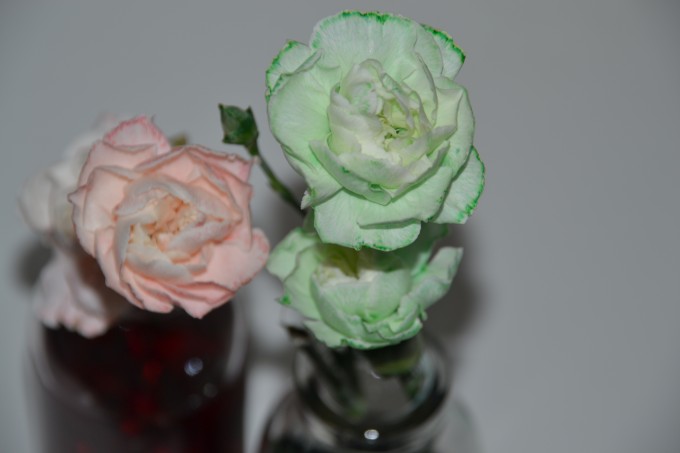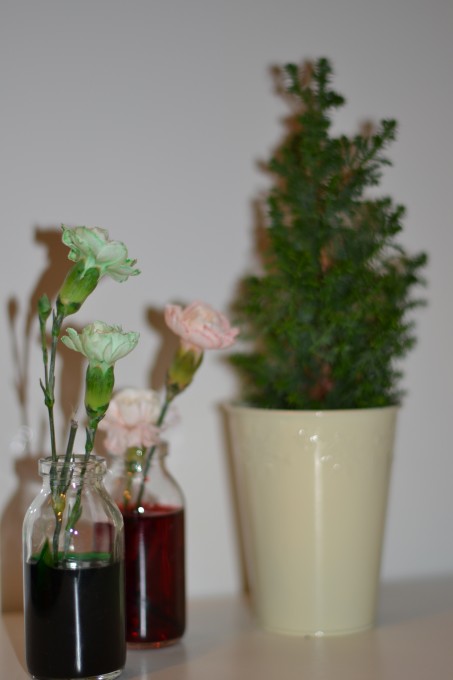We’ve done a few transpiration activities before, and if you followed our Spectacular Summer Science series, you might remember I struggled to get the flowers to change colour with natural food colourings. I was so disappointed as this activity is such a great way to learn about transpiration.
The key to getting it to work is to use the right kind of food colouring. Natural colours don’t tend to work.
What do you think of our Christmassy Carnations?
For a full explanation, see my first transpiration post.
Last Updated on October 19, 2023 by Emma Vanstone



We’ve struggled to make this work too. Some of the food colourings have a high glycerol content and I suspect dehydration from this is what caused this to fail. I need to get round to trying this with a different food colouring. http://weshallobtaindeliveringgrace.blogspot.co.uk/2013/03/when-science-goes-wrong.html
very very cool! glad the non natural food colouring worked!
Make sure your flowers are healthy and in an early budding state to ensure saturation. Other general tips are to ensure hydration and trim the stem a bit during the process.
Also consider dying colored flowers or composing your own dyes for interesting results.
Happy the colors worked for you! I love the Christmas twist. We need to try this again at our house with different food coloring.
I did try to split the stem Trisha, but they were too thin.